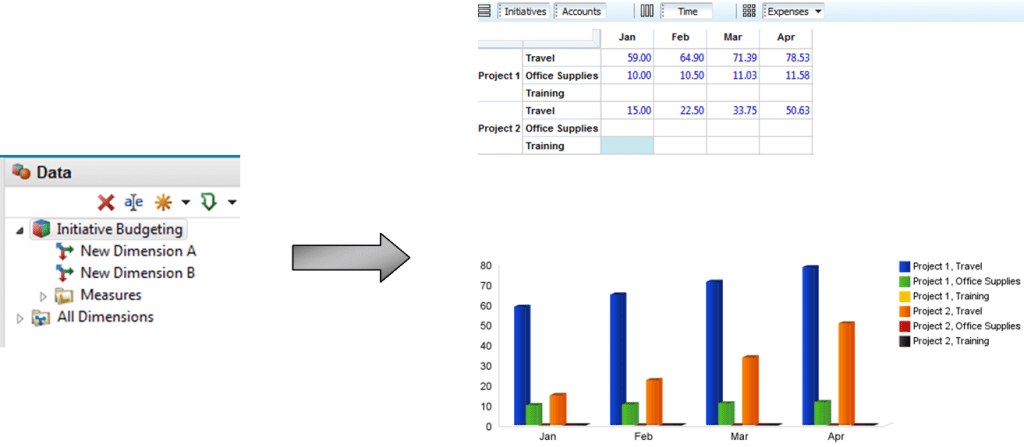The value of prototyping
Last week, I came across an excellent post by the Truly Deeply blog. It was titled ‘Brands need to Innovate or they will fade‘. The author of the blog argues that brands are under pressure to innovate their products and services. But innovating becomes harder and harder as the “future is less and less an extrapolation of the past“. While this is nothing new and surprising, the post provides an idea of how companies can stay innovative. The writer describes a technique that business analytics professionals need to be familiar with: prototyping.
Prototyping boosts thinking

The author(s) of the Truly Deeply blog describe how the famous design firm IDEO leverages prototyping to rapidly innovate. Rather than sitting down with a blank sheet of paper and waiting for inspiration, IDEO typically get immersed in a new topic that they are working on. Not only that: they jump right in the water and start prototyping new ideas very early during any given project.
“They refer to it as ‘building to think’ instead of thinking about what to build.”, The Truly Deeply Blog
But why does prototyping work for them? It kick-starts the learning process (see quote above). Prototyping allows them to play with their ideas and to expand their thinking. Let’s keep in mind: theories on a piece of paper rarely inspire. And once you have a prototype, you can start making sound decisions that are based on direct and hard evidence. This in turn can help you with obtaining commitment. This is especially important when people are risk-averse or lack understanding.
“The power of prototyping or pilot testing is you fast track moving to evidence based decision making.”, The Truly Deeply Blog
Prototyping and Business Analytics
I couldn’t agree more with the Truly Deeply blog. Prototyping is an extremely valuable technique. Every business analytics professional should add it to the toolbox. Traditional IT project management taught us that we had to write lengthy requirements and design documents. But the problem with that approach is that business and IT have a very hard time figuring out and agreeing on what is really required. I wrote about those problems a while ago. Prototyping on the other hand allows the analytics professional to rapidly understand the true requirements. At the same time, the business person can quickly identify how the new solution can add value.
Prototyping in Action
Prototyping doesn’t have to be difficult and time-consuming. The new Cognos Insight solution, for example, allows business users to do prototyping by themselves. With Cognos Insight you can not only explore data but also develop small models on the fly. Take a look at the picture below. I started with an empty workspace and developed a prototype for an initiative-based view of my budget. This took a few clicks and some minimal typing. All that in under 2 minutes. And now I can go ahead and play with prototype and test drive it. Contrast that to a dry requirements or design document.

Prototyping creates value
Make sure to add prototyping to your toolbox. It is tremendously helpful and valuable. I argue that proper prototyping significantly increases your success rate. Cognos Insight especially allows you do develop neat prototypes for dashboards, reports, plans, budgets and forecasts. But keep in mind: prototyping should never violate good solid project management processes. You can read more about that in a prior post.
How can you leverage prototyping to advance your thinking or that of your users? What are your experiences with prototyping?
